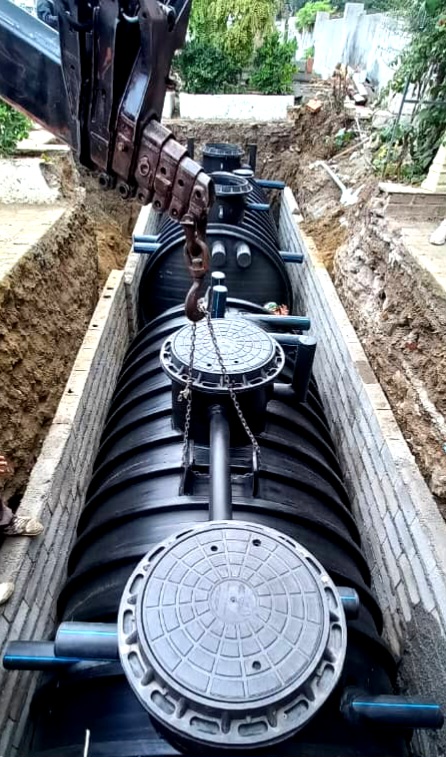Grease trap
Grease Trap - Grit Separator Considering that the wastewater produced in large kitchens and some workshops contains significant amounts of oil, grease, and organic and inorganic grit, and its disposal into groundwater and surface water has adverse environmental effects, it is essential to take action to remove these substances from the wastewater. If oil, grease, and coarse particles are directly disposed into absorption wells, the well springs will become blocked, leading to well clogging and premature filling. The costs of well emptying, digging new wells, and groundwater pollution are consequences of discharging grease and grit into these wells. Oil/Water Separator Oil/water separators, or grease traps, are devices used to separate various oils, petroleum derivatives, grease, and fat from water or wastewater. Depending on the type of oil pollutants, the density difference between the pollutant and the wastewater, pH variations, and other factors, the efficiency of oil removal by grease traps varies. • Features of Grease Trap Devices • Simple installation and setup • Collection and removal of settle able solid particles from the bottom of the tank • Capability to remove free oil particles • Low energy consumption • Low maintenance and repair costs • High shock resistance to accept wastewater with varying flows • Automatic collection of grease and oil from the surface and settled materials from the bottom Types of Grease Traps • Underground (Static) Grease Traps • API Grease Traps • CPI Grease Traps • DAF Grease Traps Grease Traps by Material • Concrete Grease Traps • Polyethylene Grease Traps • Fiberglass Grease Traps • Metal Grease Traps Applications of Grease Traps • Carwash • Oil Ports • Food Processing • Services and Maintenances • Automotive Factories • Oil and Gas Refinery • Chemical and Detergent Manufactories


